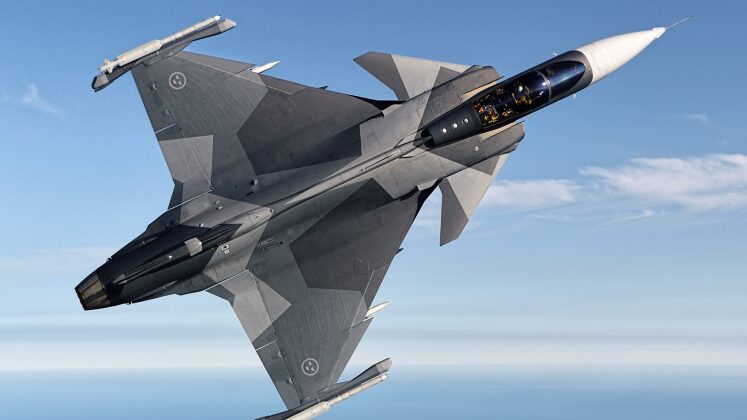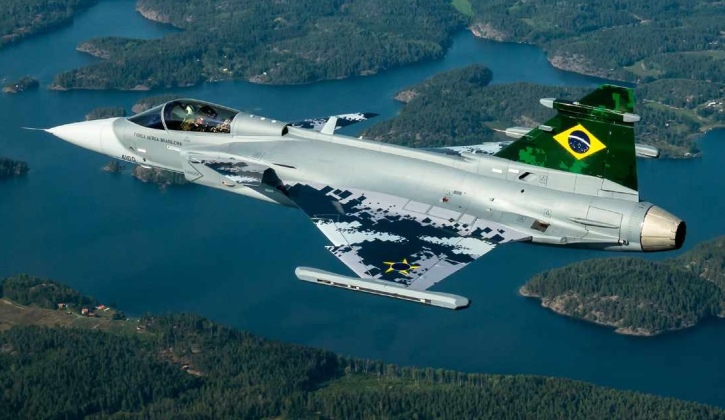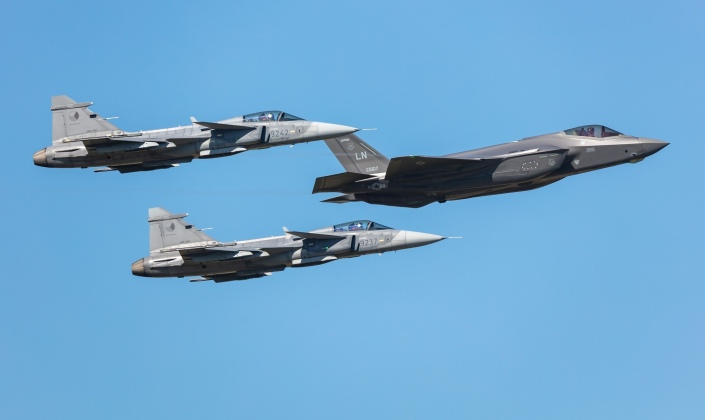News
Sweden Addresses Longstanding Fighter Obsolescence Issue with First Gripen E’s Service Entry
The Swedish Air Force received its first Gripen E/F ‘4+ generation’ fighter on October 20, with the first of 60 planned aircraft landing at the Skaraborg Wing’s home basein south-central Sweden. “This is a big day that marks the beginning of a new chapter in Swedish aviation history,” the Skaraborg’s Wing Commander Mattias Ottis stated, adding that the unit was “the centre of Swedish fighter aircraft development” and was responsible for “paving the way for the future.” Although the Gripen E/F was previously exported to equip the Brazilian Air Force, and began to arrive in the country over five years ago in September 2020, the Swedish Defence Ministry has procured the fighters far more slowly for domestic use. This contrasts sharply with the approaches taken by the large majority of fighter producers which prioritise their domestic fleets, with only Russia in the 1990s and 2000s having similarly prioritised its new and most capable fighters for export due to an acute lack of funding.

The Gripen C/D currently relied on by the Swedish Air Force has long faced significantly obsolescence issues, with the aircraft using mechanically scanned array radars that are among the weakest of any fighters built in the post-Cold War era, while being highly susceptible to jamming. The Gripen E/F addresses some of the older variant’s leading shortcomings, integrating a considerably more powerful and efficient F414 engine to significantly improve range and flight performance, while partly compensating for a lack of stealth using superior electronic warfare systems, and integrating the new Raven ES-05 active electronically scanned array radar with considerably more power and less vulnerability to enemy electronic warfare. The fighter is also compatible with a range of new missile types, most notably the Meteor long range air-to-air missile which is significantly superior to the AIM-120C relied on by older Gripen variants.

Although the Gripen E/F represents a major improvement over older variants of the fighter, serious questions regarding the sufficiency of its combat capabilities remain. The ES-05 radar, although representing a major improvement, is not only significantly less advanced that cutting edge new radars such as the F-35’s new AN/APG-85, but is also among the smallest radars carried by any fighter in the world, with heavier fighters such as the Russian Su-30SM2 and Chinese J-16 carry radars over four times as large, and in China’s case benefitting from greater sophistication. The limited power of the radar not only creates electronic warfare vulnerabilities, but also limits situational awareness, forcing the Gripens to rely on supporting aircraft such as F-35s or E-7 AEW&Cs to be able to engage targets at longer ranges.

The Gripen E/F has consistently lost every tender in which it has competed against the F-35, with SAAB President and CEO Micael Johansson in August 2022 lamenting the lack of Gripen sales, blaming political factors and stressing his “extreme frustration.” The fighter’s primary advantage over other Western fighters is its very light weight, far below that of even the F-16, and accompanying very low operational costs and maintenance needs, which has allowed operators to maintain availability rates at close to 100 percent. F-35 operators, by contrast, pay several times as much for sustainment while generally struggling to have fighters available at rates of more than 55 percent. As China, the United States, and to a lesser extent Russia all rapidly expand their fifth generation fleets, while China is poised to begin fielding the world’s first sixth generation fighters around the year 2030, Sweden’s small fighter industry remains close to two decades behind as it only just begins to belatedly move into the ‘4+ generation’ era.












